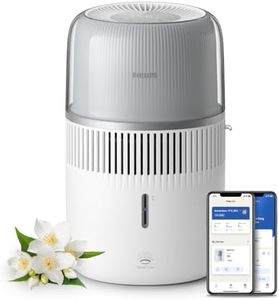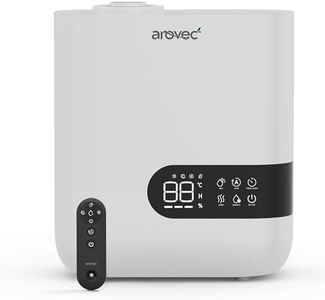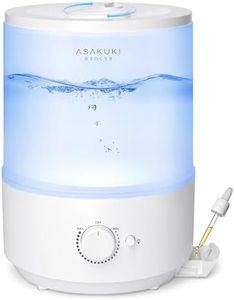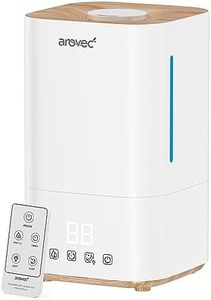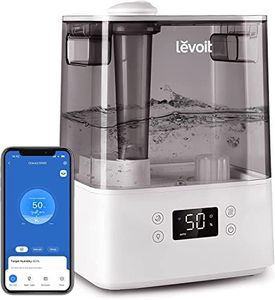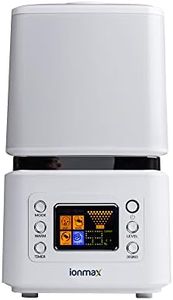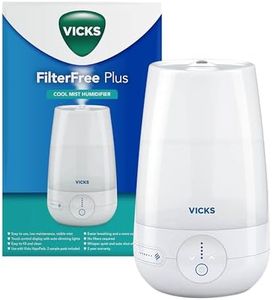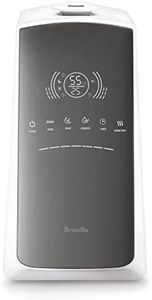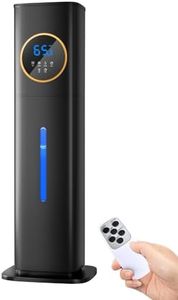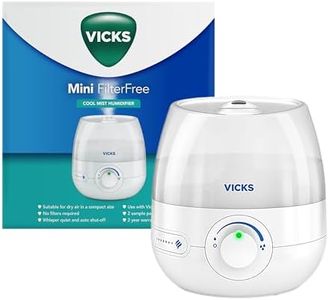We Use CookiesWe use cookies to enhance the security, performance,
functionality and for analytical and promotional activities. By continuing to browse this site you
are agreeing to our privacy policy
10 Best Room Humidifier
From leading brands and best sellers available on the web.Buying Guide for the Best Room Humidifier
Choosing the right room humidifier can make a big difference in your comfort and the air quality in your home. The main goal is to find a humidifier that matches the size of your space and personal needs, while being easy to use and maintain. Pay special attention to how much moisture the unit can add to the air, how easy it is to clean, the noise level, and any extra features that might make your life simpler. By focusing on the specs that affect daily experience, you can confidently select a humidifier that keeps your room comfortable and healthy.Coverage AreaCoverage area refers to the size of room that the humidifier can effectively humidify, usually measured in square feet or square meters. This is important because a humidifier that's too small won’t improve a large room, while an oversized model may waste energy or cause over-humidification. Models are typically divided into small (less than 300 sq ft), medium (300-500 sq ft), and large (over 500 sq ft) segments. To choose the right one, measure your room and pick a humidifier designed for a slightly larger space to ensure effective performance.
Water Tank CapacityWater tank capacity tells you how much water the humidifier can hold at one time, expressed in liters or gallons. This matters because a larger tank means fewer refills, especially important if you want to run the humidifier overnight or during the day without interruptions. Small tanks (under 1 liter) need frequent refilling, medium (1-3 liters) are good for average bedroom use, and large (over 3 liters) are better for continuous operation in larger spaces. Consider how often you’re willing to refill and how long you want the humidifier to run between refills.
Mist OutputMist output indicates how much moisture the humidifier can put into the air, measured in milliliters per hour or similar. It directly impacts how quickly and effectively the air is humidified. Lower outputs work well for smaller rooms or personal use, while higher outputs are suited for larger rooms or for very dry environments. Look for a model with adjustable mist settings so you can tailor the amount of moisture to your comfort and the needs of your space.
Noise LevelNoise level is how much sound the humidifier makes while operating, often measured in decibels (dB). This matters if you plan to use it in a bedroom, baby’s room, or workspace where quiet is important. Humidifiers can be categorized as ultra-quiet (under 30 dB), moderate (30-40 dB), or louder (over 40 dB). If you’re sensitive to noise or will use the unit at night, opt for a lower noise level.
Type (Ultrasonic, Evaporative, Steam/Vaporizer)There are different types of humidifiers—ultrasonic, evaporative, and steam (vaporizer)—each with its own strengths. Ultrasonic models are quiet and energy-efficient, suitable for most homes. Evaporative units use a fan and wick to distribute cool mist, which can be noisier but provide natural humidity regulation. Steam or vaporizer types use heat to add moisture and can also help reduce germs but use more energy and can get hot to touch. Your needs, such as low noise, easy cleaning, or additional germ protection, should guide you toward the right type.
Ease of CleaningA humidifier needs regular cleaning to prevent mold and bacteria growth. Design affects how easy this is—look for large openings, fewer small parts, and dishwasher-safe components if possible. Frequent cleaners are less likely to get clogged or smell. If you want low-maintenance, prioritize models advertised as easy to clean.
Automatic Shut-offAutomatic shut-off is a safety feature that turns off the humidifier when the water tank is empty. This spec is important for preventing the unit from running dry, overheating, or getting damaged. It's especially useful if you run the humidifier overnight or while you're away. If you want peace of mind and added safety, make sure this feature is included.
Additional Features (Filters, Humidistat, Night Light, etc.)Some humidifiers offer extra features such as built-in humidistats (to control humidity level automatically), filters (to clean air or water), night lights, and timers. These can improve convenience and customization. Decide which extras matter to you—like an automatic humidity sensor for hands-off operation, or a night light for bedrooms—and look for a humidifier that matches those preferences.

